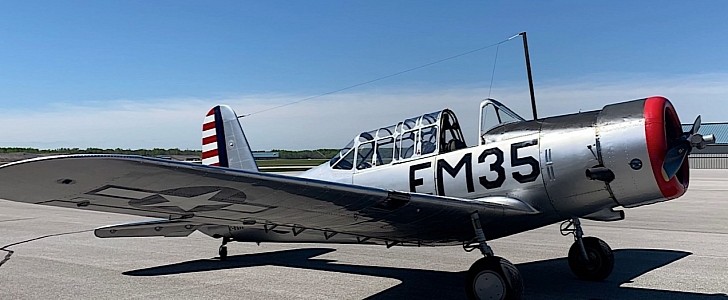The name Vultee Aircraft has long left the world scene, so it pretty much means nothing for the people in our age and time. But back in the years of the Second World War though, it was a big name for a lot of the American pilots that would later go on to fight over the planet's battlefields.
That’s because a lot of them learned how to fly and fight on something called Vultee BT-13 Valiant. The machine, developed for the branch called back then the United States Army Air Corps (USAAC), was used for the second phase of the three-phase training program all pilots had to go through.
The Valiant first entered service in 1940, and even if it was primarily used by American pilots, it eventually ended up being deployed in the service of around 27 countries. The large number of Valiants made, over 9,500, more than allowed for that to happen.
As with any airplane, there were several variants of the Valiant. The BT-13A, like the one we have here, is the most common, with over 6,400 of them made. It came with a 450 hp engine, it was capable of flying at speeds of up to 180 mph (290 kph), and for a range of up to 725 miles (1,160 km). Because it was designed as a trainer aircraft, it lacked any armaments.
We dug this one up not in a museum, where one usually finds such machines, but somewhere in Ontario, Canada, waiting for a buyer to come along and once again take it to the sky. It still wears the livery of the USAAC and, even if we’re not explicitly told so, it looks airworthy.
The plane shows according to the seller on Platinum Fighters 2009 hours total time since new. The asking price for it is about as much as one would pay for a high-end car, $110,000.
The Valiant first entered service in 1940, and even if it was primarily used by American pilots, it eventually ended up being deployed in the service of around 27 countries. The large number of Valiants made, over 9,500, more than allowed for that to happen.
As with any airplane, there were several variants of the Valiant. The BT-13A, like the one we have here, is the most common, with over 6,400 of them made. It came with a 450 hp engine, it was capable of flying at speeds of up to 180 mph (290 kph), and for a range of up to 725 miles (1,160 km). Because it was designed as a trainer aircraft, it lacked any armaments.
We dug this one up not in a museum, where one usually finds such machines, but somewhere in Ontario, Canada, waiting for a buyer to come along and once again take it to the sky. It still wears the livery of the USAAC and, even if we’re not explicitly told so, it looks airworthy.
The plane shows according to the seller on Platinum Fighters 2009 hours total time since new. The asking price for it is about as much as one would pay for a high-end car, $110,000.






